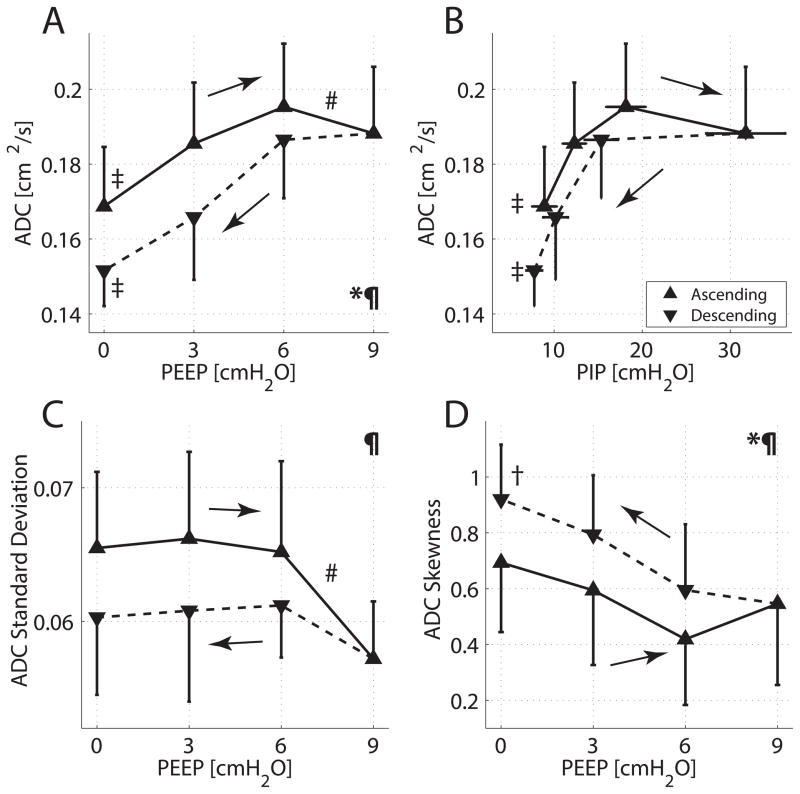Fig. 4.
Group averages and SD for: (A) 3He apparent diffusion coefficient (ADC) versus positive end-expiratory pressure (PEEP); (B) ADC versus peak inspiratory pressure (PIP); (C) ADC SD versus PEEP; and (D) skewness of ADC frequency distribution versus PEEP. Values obtained during both ascending and descending PEEP ramps are displayed with solid and dashed lines, respectively. Two-way ANOVA for changing PEEP: *P < 0.001; for type of ramp (ascending versus descending): P < 0.001. Paired t tests for PEEP 0 versus 9 cm H2O: ‡P < 0.001, †P < 0.01; PEEP 6 versus 9 cm H2O: #P < 0.01. The area under the curve subtended by ADC was larger in the ascending than in the descending PEEP ramps (P < 0.001). Area under the curve comparisons between ascending and descending PEEP ramps were significant also for ADC SD (P < 0.05) and for ADC skewness (P < 0.01).

